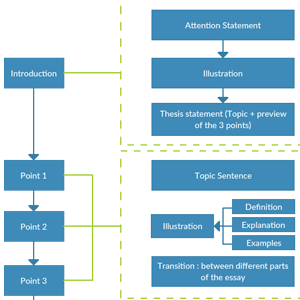
- #Automatic sequence diagram generator eclipse android#
- #Automatic sequence diagram generator eclipse software#
- #Automatic sequence diagram generator eclipse code#
- #Automatic sequence diagram generator eclipse download#
- #Automatic sequence diagram generator eclipse windows#
(Attach the official website ModelGoon-4.4.1-site. mgp file in your Java project to check the package dependencies, as shown in the following figure:ģ.4 The final project file structure effect is shown in the following figure: You can see the dependencies between the classes, as shown in the following figure: Select the Interaction Diagram and create a file with the. Drag and drop the Java class directly into this file view, and the UML class diagram will be generated automatically. Draw UML diagrams fast Export diagrams to eps, pdf, jpg, SVG, and clipboard Share diagrams using Eclipse Create new, custom UML elements Build sequence and. mgc file in your Java project to generate the class diagram. In the appropriate folder or directly in the project root directory, File–>new–>other–>ModelGoon Diagrams, as shown below:
#Automatic sequence diagram generator eclipse android#
In eclipse, select the Java or Android project that is already open. 3, ModelGoon useĪfter the ModelGoon installation is successful, restart eclipse. Do not cancel at this time, just wait patiently). (Sometimes the installation process will be longer, and there may be a phenomenon like a stuck card. Click work with–>Add–> Archive, select the downloaded ModelGoon-4.4.1-site.zip, all the way to next or accept, and finally choose finish to complete the installation. Class Diagram and System Sequence Diagrams that represent. Open eclipse and select help–>install new software. Applying transformation rules implemented in an eclipse plug-in to generate automatically Business.
#Automatic sequence diagram generator eclipse download#
Download ModelGoon-4.4.1-site.zip to your computer, preferably under the "\eclipse" folder. The version of ModelGoon to be installed is: ModelGoon-4.4.1-site.zip.
#Automatic sequence diagram generator eclipse windows#
The environment for this example is: Windows 7_X64, Eclipse Juno, JDK1.7, JRE1.7. 2, ModelGoon download and installation 2.1 Download This will also work in production an will probably scale much better than the direct approach, but if scaling isn't your thing, then the direct approach may be what you want to do.ModelGoon is an Eclipse plugin that generates class diagrams for existing Java classes in Eclipse, allows for Java package dependency analysis, model design based on UML diagrams, and reverse engineering (that is, generating class diagrams from source code). Use some standard tooling for tracing like " ", instrument your application using this tooling, and extract your diagrams using that standard tooling. Process the plant UML files to get sequence diagrams. Process the filtered output to generate "plant uml" input files ( ) for sequence diagrams.

Using the "jq" utility is a decent choice. There are many ways this can be done, use one :-)įilter the log entries so you get only the ones you are interested in. You need to be able to retrieve that log. In the methods you want to trace, write a log entry that contains that tracing information (name of usecase, trace ID, or any combination thereof), the location where the log entry was written, and any other information you want to add to your sequence diagram. Selected a project with no submodules (I mean, the src folder is directly under the project folder).
#Automatic sequence diagram generator eclipse software#
STEPS: I have installed Papyrus Software Designer 2.1.0 in Eclipse 2022-03. Editing EMF models with UML Lab The Eclipse Modeling Framework allows.
#Automatic sequence diagram generator eclipse code#
Both of these will work, and which one is the simplest in practice depends on the architecture of your application. Auto generate UML diagrams such as Class diagrams, Sequence diagrams from the existing Java code. Modeling and Code Generation Modeling is a good way to design your software. Another would be to generate some tracing ID (or get one from an external interaction), and send that as a parameter to all involved methods. There are many ways of doing this, but a simple one is to a thread local variable: Set the variable to contain the name of the thing you are tracing ("usecase foobar"), and some unique ID (UUIDs are a decent choice). Make a library where you log the name of the component/method you are in, and the session you are processing. Set up your logging to log using json, it makes the rest much simpler: This site has different variety of PlantUML examples with rendered images.

Kotlin or Java) so the suggestions I will make are biased by that. Real World PlantUML - Samples of PlantUML. I will make the assumption that you are working in a jvm language (e.g. First: This is a very good idea, and there are several ways to go about it.


 0 kommentar(er)
0 kommentar(er)
